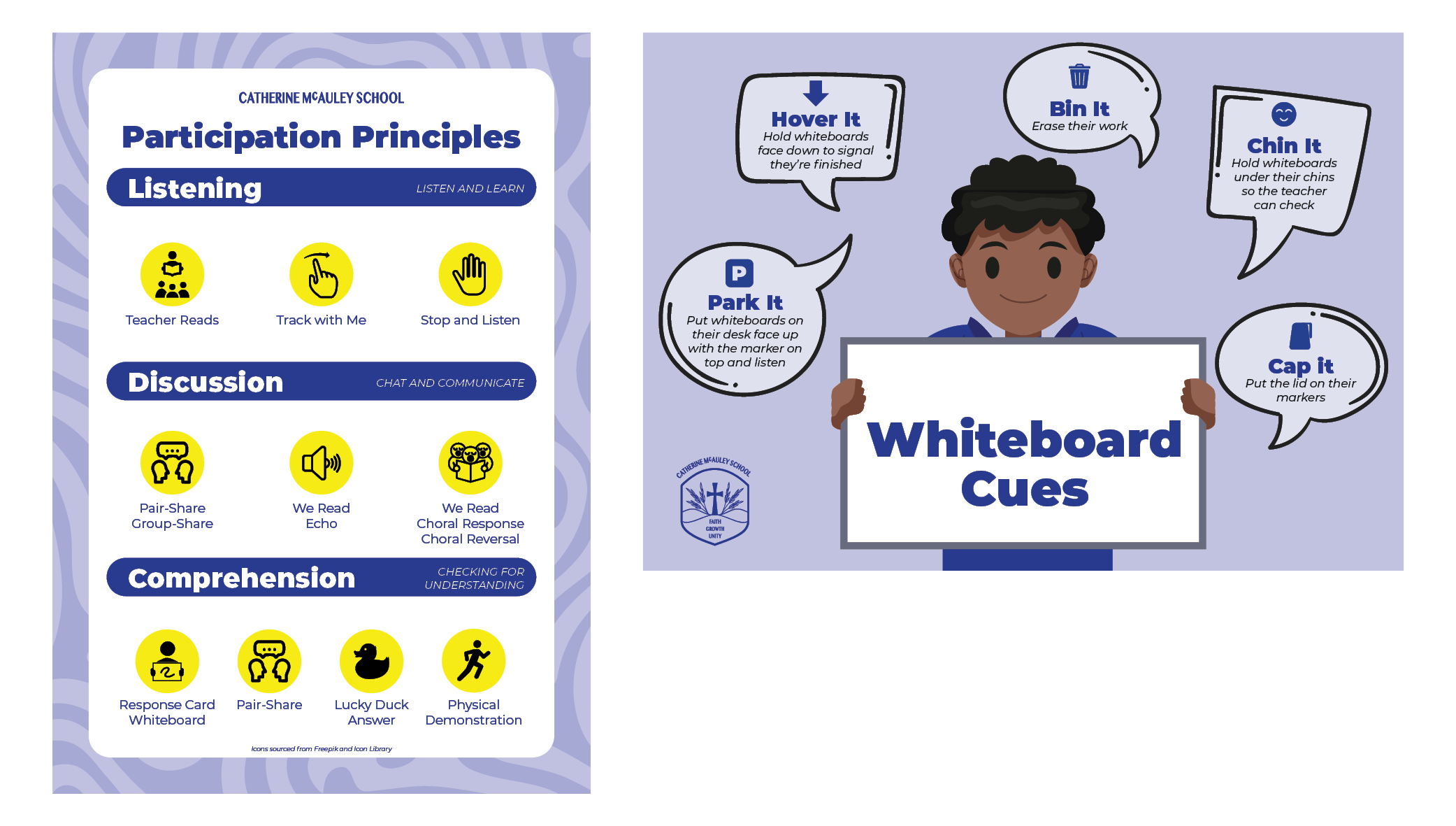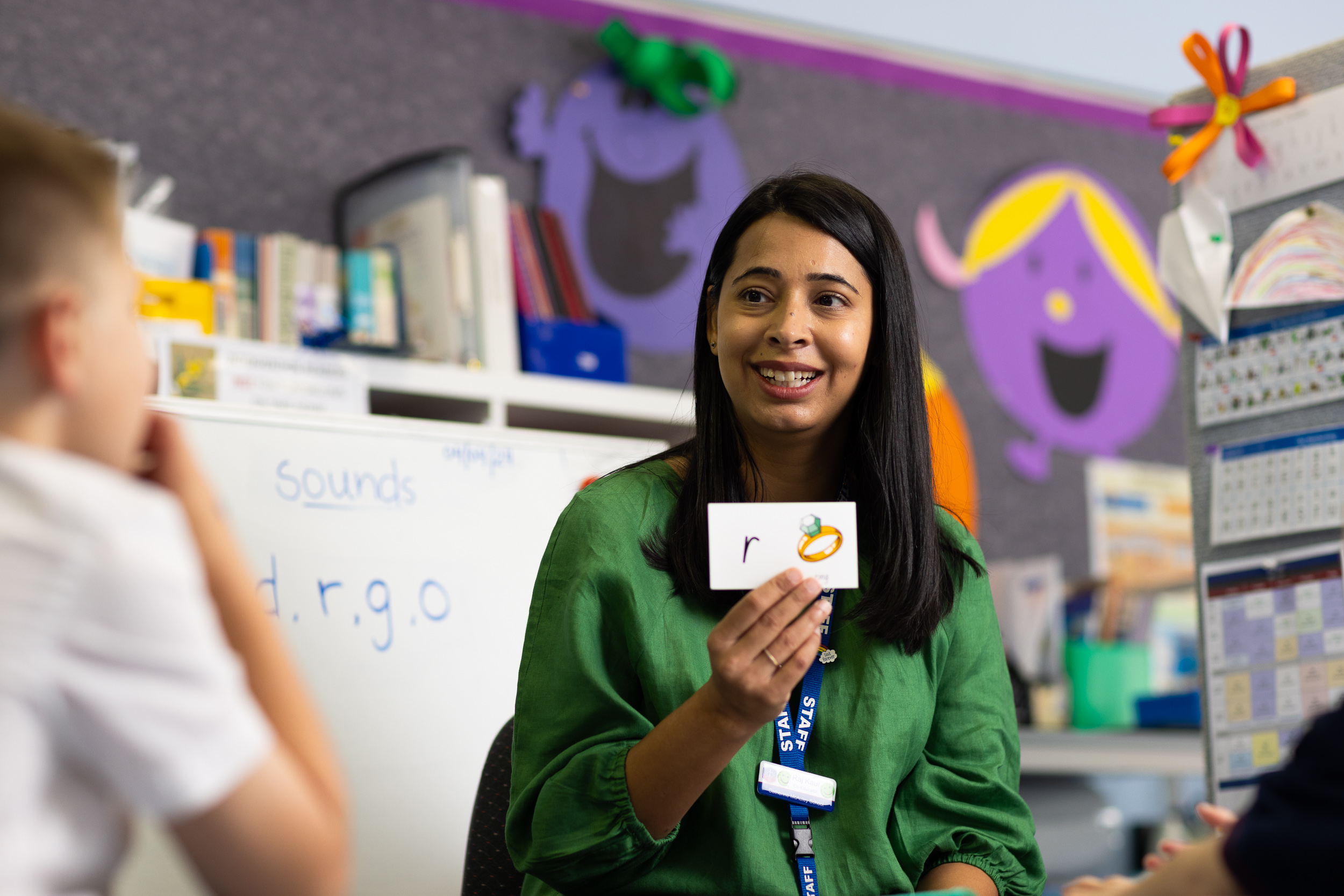Learning Philosophy
At Catherine McAuley School, our teaching and learning approach is grounded in evidence-based practices and high-impact strategies to support every student’s growth. One of the key methods we use across the school is Explicit Instruction (EI) — a clear, structured, and engaging way to teach new content.
What is Explicit Instruction?
Explicit instruction is a proven teaching method where new skills are modelled and guided through practice and feedback. It ensures students understand what they are learning and why.
Read more about explicit instruction here.
How We Use Explicit Instruction at CMS
We are continually refining and embedding Explicit Instruction as a whole-school, high-impact strategy. You’ll see it in action across all classrooms, from Early Years through to Upper Primary. It involves:
-
Systematic sequencing of concepts
-
Clear learning intentions and success criteria
-
Daily review of previously learned content
-
Active participation from all students
-
Use of whiteboards and visual cues to support automaticity
Daily Review
Daily review is an essential part of explicit teaching that helps students reinforce what they've learned, build confidence, and retain knowledge over time, transferring information into long-term memory.
What Is Daily Review in Explicit Instruction?
Daily review is a structured routine where teachers revisit previously taught concepts. It’s designed to strengthen understanding, identify gaps in knowledge, and provide students with more opportunities to practice. At CMS, we use Participation Principles to keep the automaticity and effectiveness of daily review, along with whiteboard cues used across all aspects of Explicit Instruction.

Literacy Enrichment
Literacy comprises of competency in Listening, Interacting, Speaking, Reading & Viewing, and Writing. Our reading and writing programs are based upon evidence-based practices and include 'The Big 6': Oral Language, Phonological Awareness, Vocabulary, Phonics, Comprehension, Fluency.
From Reception to Year 2
From Reception to Year 2 we support our students in the Early Years to develop literacy skills by using the InitiaLit program program for all students for reading, spelling, comprehension and fluency. This is accompanied with 'Composing Written Texts' where rich modelled texts and explicit grammar instruction is taught, including taught vocabulary. We explicitly teach sentence-level (syntax) writing skills and foster the important oral language components of speaking, interacting, and listening.
Students requiring additional support are offered the opportunity of the MiniLit intervention program to consolidate skills in reading and spelling.
From Year 3 to Year 6
We support students in Year 3 to Year 6 to develop their literacy skills by employing structured and modelled writing lessons to enhance quality writing. Our writing instruction is influenced by The Writing Rope (Joan Sedita, 2021) where essential strands of skills are woven into skilled writing. We also incorporate this with 'Composing Written Texts' across the curriculum where rich, modelled texts are used. Our systematic spelling lessons with a focus on Morphology allow our students to be exposed to a wide variety of word building which enhances word knowledge and vocabulary. This is accompanied with structured reading fluency and comprehension lessons.
Students requiring additional support are offered the opportunity of a Multi-Sensory Structured Language Group (MSL).
From Reception to Year 2
From Reception to Year 2 we support students in the Early Years to develop their numeracy skills by enabling students to employ strategies in solving problems efficiently. Mathematics lessons incorporate a strong focus on students mastering the essential mathematics facts, skills, concepts, and processes. Lessons are paired with a daily review of previously taught concepts to ensure retention of learning. Our Early Years students experience 'Math on the Mat' or 'chats' during Mathematics to explore their problem-solving skills in an environment that is encouraging, open, and modelled. Numeracy in the Early Years has a heavy focus on the use of concrete materials and manipulatives to encourage proficiency in foundational skills to then apply across other areas of Mathematics.
From Year 3 to Year 6
We support students in Year 3 to Year 6 to develop their numeracy skills by targeting the four proficiencies of Mathematics simultaneously: Understanding, Fluency, Problem-Solving, and Reasoning. Students in Years 3 to 6 have multiple opportunities to extend their understanding of Mathematics and apply across other areas. Programs such as Numerical Acumen, Problemo, and individualised programs as supplied by the Australian Maths Trust are available for our Year 3-6s to strengthen their numeracy skills. Through an engaging, hands-on approach, all new concepts and learning is made visible through the use of concrete materials, then representational items, and then eventually in an abstract way using symbols. This systematic approach supports secure concept development and understanding. For our students in Years 3 to Year 6, Mathematics vocabulary is also explicitly taught and fostered.
Accredited Multisensory Structured Language School
Catherine McAuley School is accredited by the Australian Dyslexia Association (ADA) to deliver Multisensory Structured Language (MSL) in the classroom. Catherine McAuley School is one of the first schools in South Australia to be accredited by the Australian Dyslexia Association.
MSL is founded upon scientific reading principles and multi-sensory techniques and equips teachers with the skills and knowledge to teach language and literacy in a direct, explicit, systematic, cumulative and structured manner. MSL instruction involves the simultaneous use of visual, auditory and kinaesthetic-tactile pathways to enhance memory and learning of written language. Through this approach, teachers and their students rely on all three pathways for learning.
MSL approach is employed from Reception for all students to help with their spelling and reading instruction. This pedagogy is also being employed as intervention for students in years one to five to accelerate their literacy development and is delivering pleasing results.



